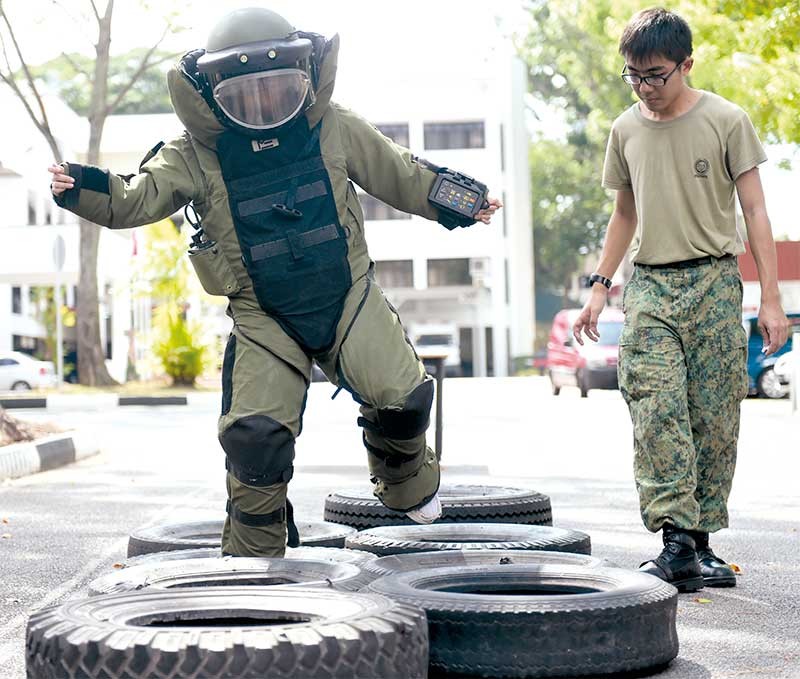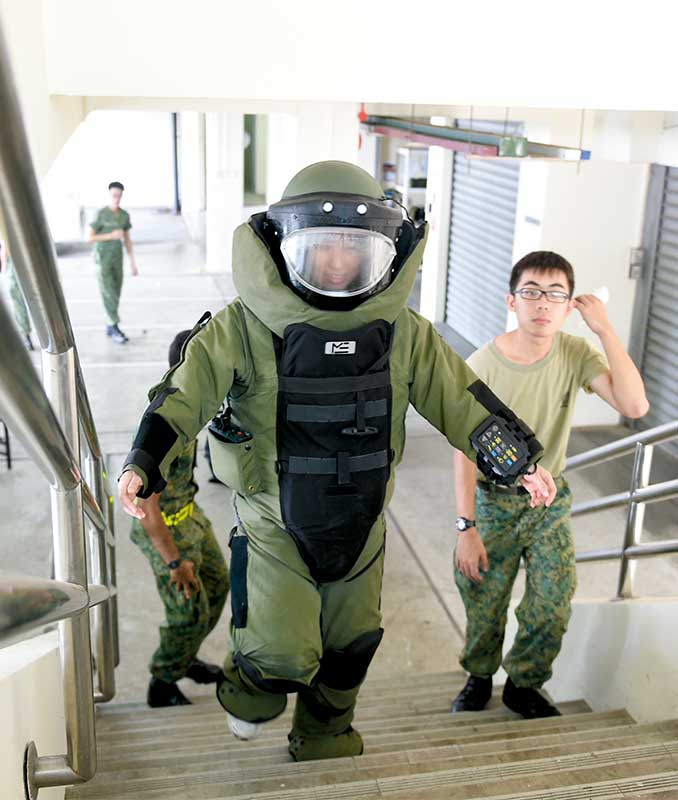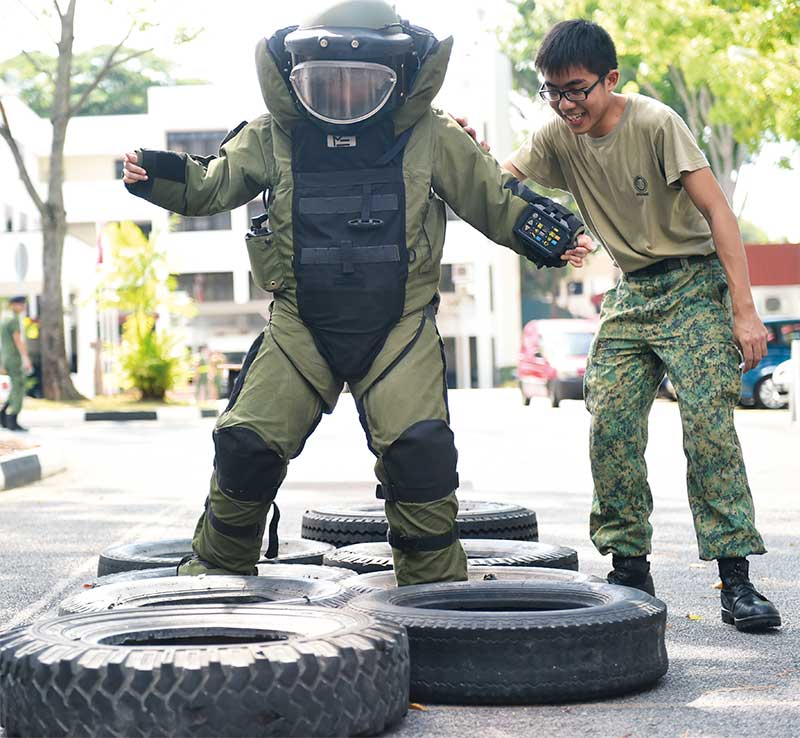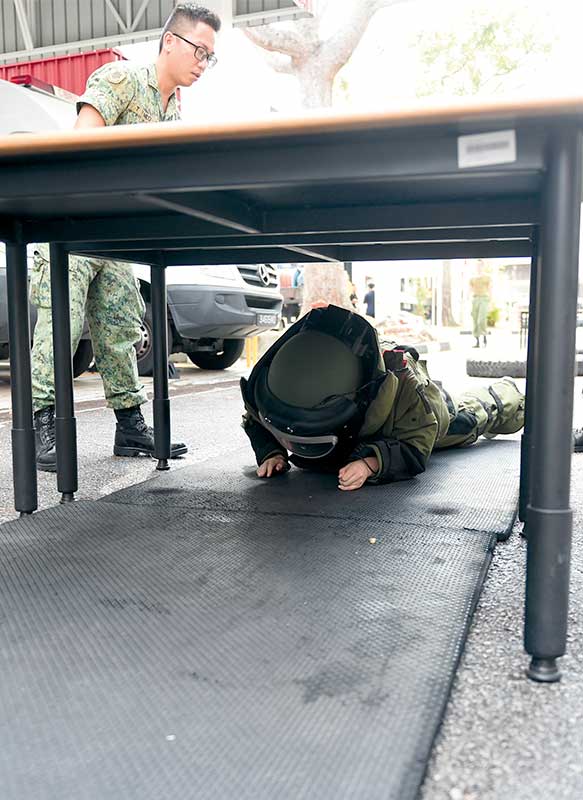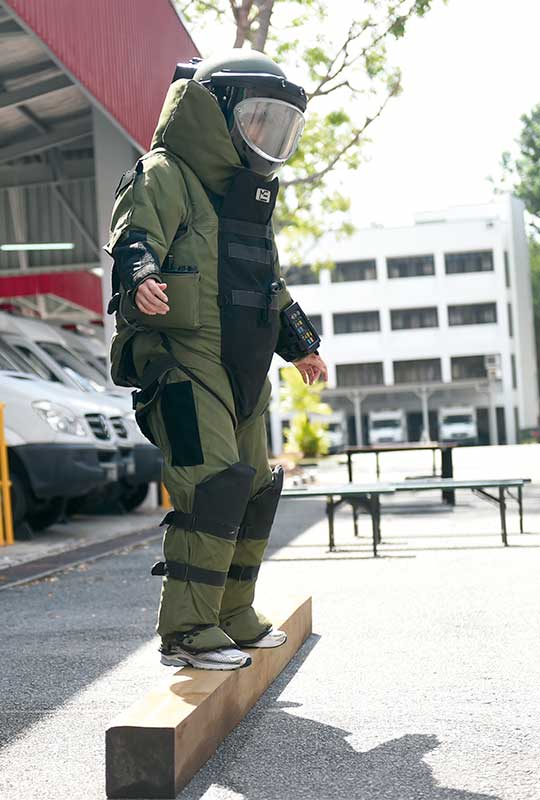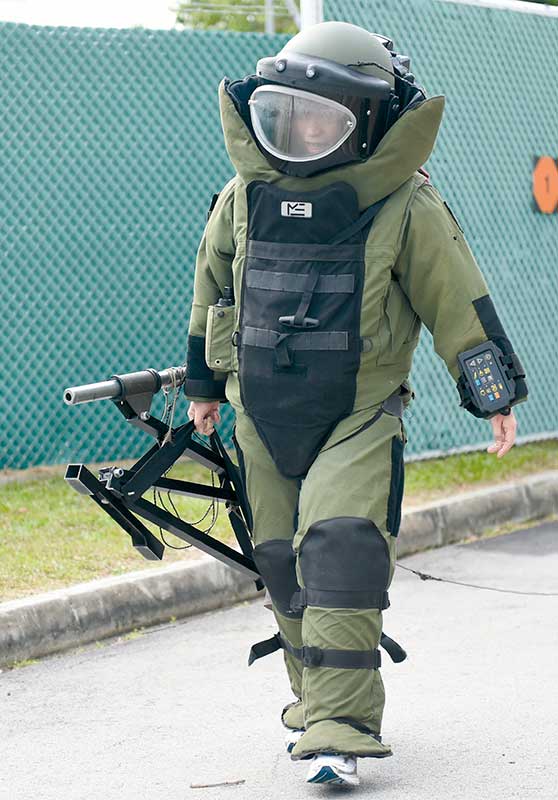PEOPLE
BOMBER WOMAN!
21 Jul 2015
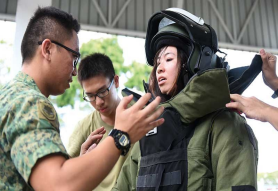
PIONEER journalist Jing Ting takes on the Explosive Ordnance Disposal (EOD) Vocation Obstacle Course in a 31kg-bomb suit.
My neck is about to snap.
The helmet is so heavy, I can't lift my head. My body is sprawled on the ground. I try using my hands to hoist my body up, only to fail miserably. I am spent. And I'm only halfway through the Vocation Obstacle Course (VOC)
Background brief
While the Standard Obstacle Course measures an individual's baseline combat fitness, the team-based VOC is customised to each vocation's combat skills and load.
EOD personnel are trained to dispose of bombs or explosive devices, and Major (MAJ) Kenny Chen, the VOC Supervising Officer, gave me a run through of my mission: to go through six obstacles and dispose of a simulated Improvised Explosive Device (IED) in 17 minutes - all while wearing a 31kg bomb suit.
As I had no prior training, I went through a modified version of the VOC under no time pressure. And while EOD trainees normally work in pairs, I didn't need a partner as I wasn't trained to use the special equipment to dispose of the IED.
"The suit is stuffy and if you're not conditioned to it, it can be quite tough. Once you're done (with the VOC), you're going to be sweating buckets," said MAJ Chen.
I immediately started praying that they had set aside a clean suit for me.
Do the shuffle
My first task was to climb up two storeys (EOD trainees climb up and down four storeys), walk across the building and descend the stairs. "Remember to breathe through your nose, because the visor will fog up and blur your vision if you breathe with your mouth," advised MAJ Chen.
Gingerly taking my first step up, I quickly realised what lumbering meant. The helmet narrowed my field of vision at all angles, and the visor fogged up easily.
Once down, I made my way to my next obstacle where I had to climb across a table. My movements were restricted, but I managed to clumsily roll across the table.
Next, I had to step across an obstacle of six tyres. I couldn't quite see where my foot should go and almost sprained my ankle a couple of times. Thankfully, the safety officers held my arm whenever I wobbled.
The struggle
And then I came to the toughest obstacle of all. I had to leopard crawl under the table, across a mat. To get into the crawling position, I kneeled down and lurched forward.
However, I forgot about the giant 5kg helmet I had on. It was weighing my head down so much that my neck went limp. I called out for help, but the helmet muffled my voice.
Luckily, the safety officers saw my distress. After pulling me up, they opened my visor to let some fresh air in. "Are you okay, ma'am?"
"Yes, I'm okay," I replied as I gasped for air. Although I'd done leopard crawling before, the bulky bomb suit made everything much more difficult. I was afraid of knocking against the table and my overhead vision was blocked by the helmet. The crawl felt like an eternity.
When I was pretty sure that I could see blue skies again, my first instinct was to lift my head. Bad move.
The safety officers had advised me not to tilt my head up as I had not gone through progressive training to get used to the weight of the helmet. I had no more strength and my neck felt like it was about to break.
The next thing I knew, I was being helped up (again!) by the ever-alert safety officers. After reassuring them that I could go on, I proceeded to the last two obstacles: the Dodging Panels and the Balancing Beam. Passing through those stations easily, I finally reached my objective.
At this point, EOD trainees position a water disrupter and aim it at the simulated IED. This device sprays a high-pressure jet of water during real operations to split the IED's detonator and explosive charge.
The trainees then use a tweezers-like CV tool to remove any debris, and the IED components are placed into two ammo boxes.
As I was not trained to use the equipment, all I had to do was carry the water disrupter to the IED and walk back to my starting point. And I was finally done!
The aftermath
After going through their VOC, I have gained a lot of respect for these EOD guys, who are able to think on their feet and react calmly when put in dire situations.
MAJ Chen explained that the VOC was meant to build up the trainees' endurance in a prolonged operation while wearing the bomb suit. "When managing an IED situation, trainees are expected to go to locations they may not be familiar with, and certain terrains will pose restrictions in movement, such as climbing the stairs.
"This is why we need to ensure that they are able to go through a series of activities and still be able to think and react properly in mitigating the IED threat."
ALSO READ IN PEOPLE
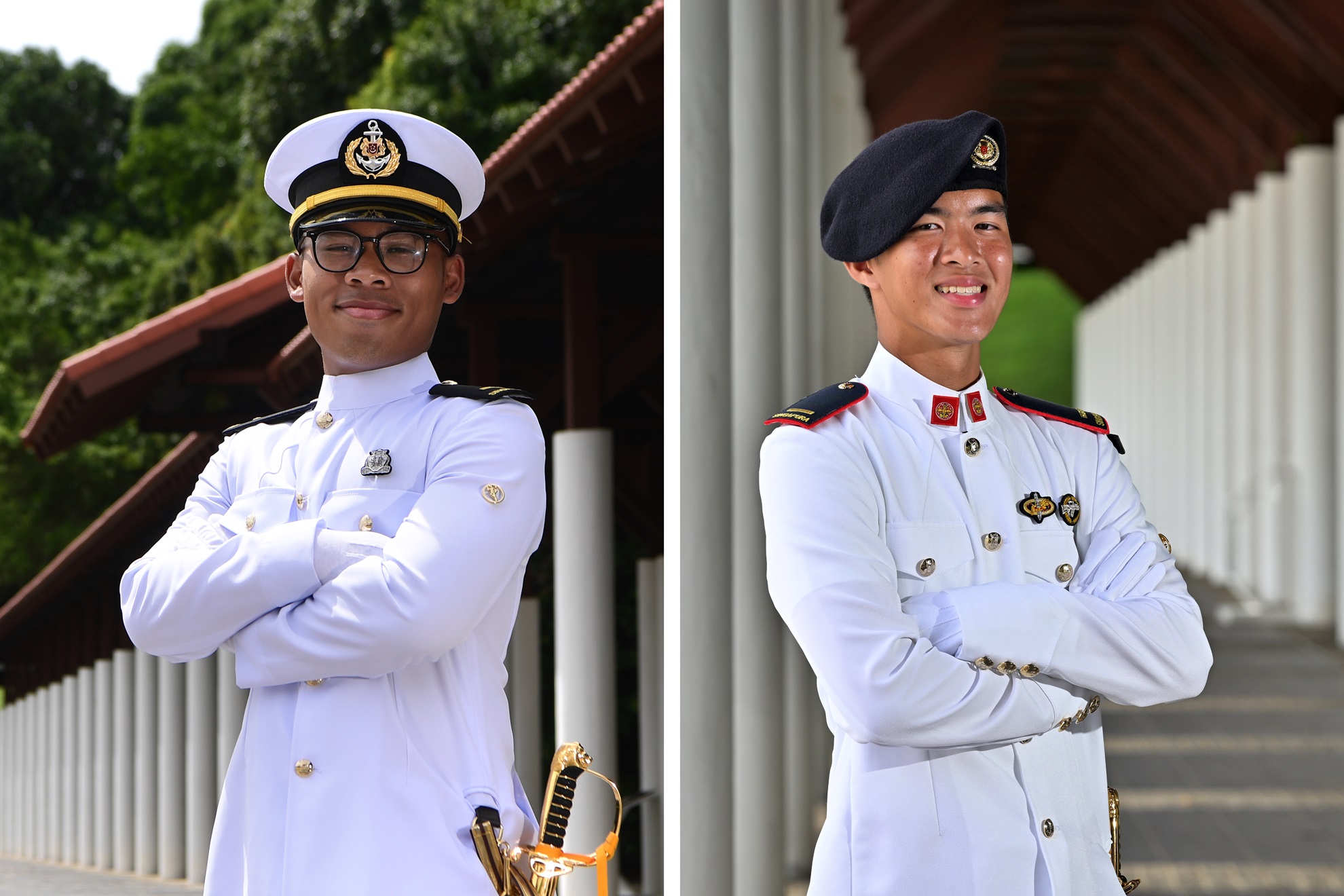
Rising above the tide & stepping forward to lead
13 Dec 2025
They’re among the SAF’s latest batch of officer graduands this year. Meet 2LT Mohamad Wira Kuriniawan and 2LT Ryan Ong, who will be heading to the Navy’s 180 Squadron and 1st Battalion, Singapore Guards respectively.

Guardian of the skies, guardian of family heritage
08 Dec 2025

Father & son, bonded by service
02 Dec 2025

